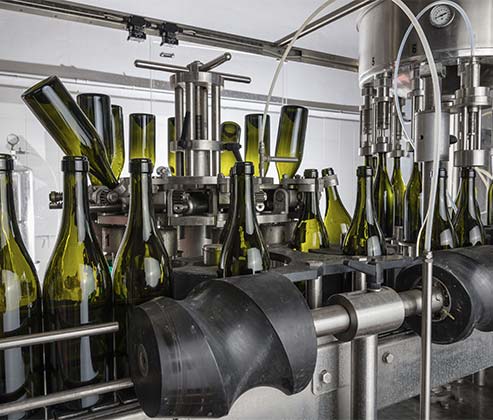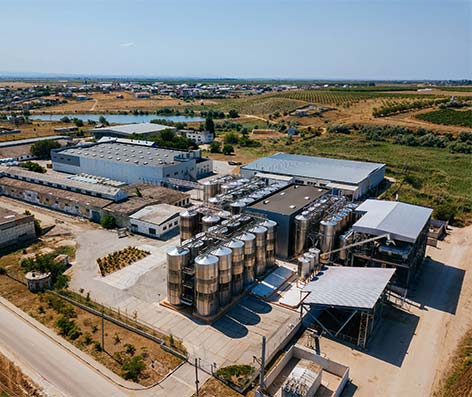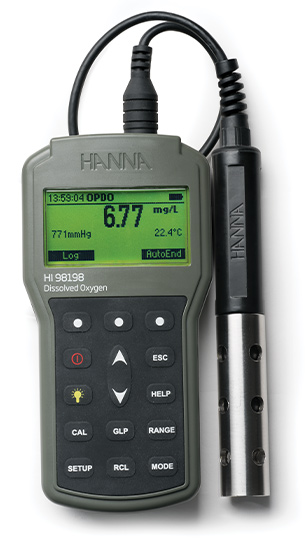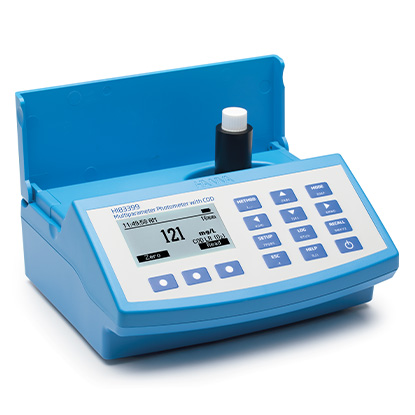Winery wastewater is typically generated from washing operations during grape harvesting, pressing, and fermentation, as well as from washing equipment and bottles.
The wastewater contains high concentration of biodegradable organic compounds together with small concentrations of phenolic compounds, sugars, organic acids, and nutrients.
The quantity of produced waters and their pollution load vary in relation to the working period and the winemaking technologies used.


If we talk about business and environmental performance aspects of the wine industry, the management of winery wastewater is very important and has great impacting on the sustainability of the facility. Suitable wastewater treatment will improve water use efficiency and reduce the risk of environmental impact.
Environmental issues are a critical factor in industry competitiveness so optimisation of wastewater treatment and robust choice of processes in order to reduce impacts and save energy becomes important.
As indicated by the high biochemical oxygen demand (BOD), winery wastewater is highly biodegradable (due to the high concentration of ethanol or sugars). BOD values range typically between 2500 – 7000 mg/L in vintage period and between 800 – 1500 mg/L in non-vintage period.
COD values range typically between 800 and 12,800 mg/L.
pH of the wastewater is between 4-8 in vintage period and 6-10 pH in non-vintage period.
Nitrogen should be measured to in wastewater treatment and concentration in vintage period should be 20-75 mg/L, while the concentration in non-vintage period should be 5-25 mg/L.
Concentration of total phosphorus should be in vintage period 10-20 mg/L and in non-vintage period 5-10 mg/L.
There are several broad options for treatment of winery wastewater, including:
- physical/chemical processes (e.g., screening, settling tanks, filtration, pH correction)
- mechanically based biological processes (activated sludge, trickling filtration, etc.)
- lagoons and natural systems (biological processes, including anaerobic and aerobic ponds, and wetlands).
Before and after wastewater treatment you have to monitor the concentration of most important parameters. For that purpose, HANNA Instruments have simple solution.

For measuring BOD in wastewater use:
HI98198
Optical Dissolved Oxygen Meter
The HI98198 Optical Dissolved Oxygen Meter makes measuring the concentration of dissolved oxygen hassle-free. Optical DO technology doesn’t require a minimum flow rate, so there is less drift in your readings. Perfect for the field or for the laboratory, the Quick Connect probe requires no membranes, no filling solution, and no warm-up time so you can measure without hesitation. Your meter comes complete in a rugged, custom carrying case for easy transportation.
- Optical DO technology for fast and stable readings, even in tough environments.
- Digital probe with Smart Cap Technology eliminates costly, tiresome membranes and solutions.
- An IP67-rated waterproof, rugged body makes this portable meter ideal for field use.
HI98198 measures dissolved oxygen levels in water using enhanced optical dissolved oxygen technology to ensure high levels of accuracy. With built-in methods and calculations for the measurement of Biological Oxygen Demand (BOD), Oxygen Uptake Rate (OUR), and Specific Oxygen Uptake Rate (SOUR), there is no need for manual conversions.
Measuring COD along with pH, nitrogen and total phosphorus can be done with one simple and easy-to-use instrument.
HI83399
Water & Wastewater Multiparameter
(with COD) Photometer and pH meter
(with COD) Photometer and pH meter
HI83399 is a compact, multiparameter photometer for measuring key water and wastewater quality parameters. The meter is one of the most advanced photometers available with a innovative optical design that utilizes a reference detector and focusing lens to eliminate errors from changes in the light source and from imperfections in the glass cuvette. 40 key water and wastewater quality parameters with 73 different methods covering multiple ranges are programmed into the meter. Wastewater treatment digestion parameters include COD, Total Nitrogen and Total Phosphorous which are important for monitoring nutrient removal.
The HI83399 also offers an absorbance measurement mode for performance verification and for users that would like to develop their own concentration versus absorbance curves. To save valuable laboratory benchtop space, the HI83399 doubles as a professional pH meter with its digital pH/temperature electrode input. Now one meter can be used for both photometric and pH measurements.
- Advanced optical system
- Unparalleled performance from a benchtop photometer
- Digital pH electrode input Save valuable bench space with one meter that works both as a photometer and as a laboratory pH meter
- Water and Wastewater Treatment Digestion Parameters Allows measurement of COD, Total Nitrogen and Total Phosphorus

COD – easy monitoring of water treatment plant efficiency
Author:
Tajana Mokrović
mag.nutr.
Tajana Mokrović
mag.nutr.

With Great Product Come Great Results
Service
Training
Rapair
Maintenance
Sources:
Andreottola, G.; Foladori, P. and Ziglio, G. (2014) Biological treatment of winery wastewater: an overview. Water Science and Technology 60(5):1117-1125.
Laginestra, M. (2012) Managing winery wastewater for vintage and non-vintage periods. Australian & New Zealand Grapegrower & Winemaker 584:92-95.
Cassano, A., Rastogi, N. K., & Basile, A. (2015). Membrane technologies for water treatment and reuse in the food and beverage industries. Advances in Membrane Technologies for Water Treatment, 551–580. doi:10.1016/b978-1-78242-121-4.00018-6
Andreottola, G.; Foladori, P. and Ziglio, G. (2014) Biological treatment of winery wastewater: an overview. Water Science and Technology 60(5):1117-1125.
Laginestra, M. (2012) Managing winery wastewater for vintage and non-vintage periods. Australian & New Zealand Grapegrower & Winemaker 584:92-95.
Cassano, A., Rastogi, N. K., & Basile, A. (2015). Membrane technologies for water treatment and reuse in the food and beverage industries. Advances in Membrane Technologies for Water Treatment, 551–580. doi:10.1016/b978-1-78242-121-4.00018-6





